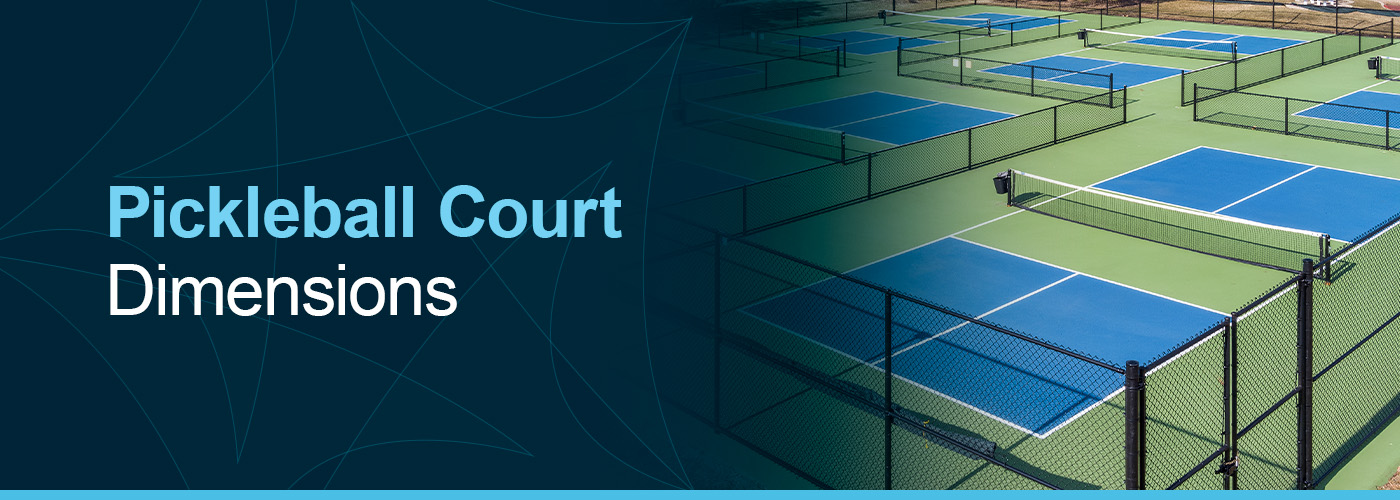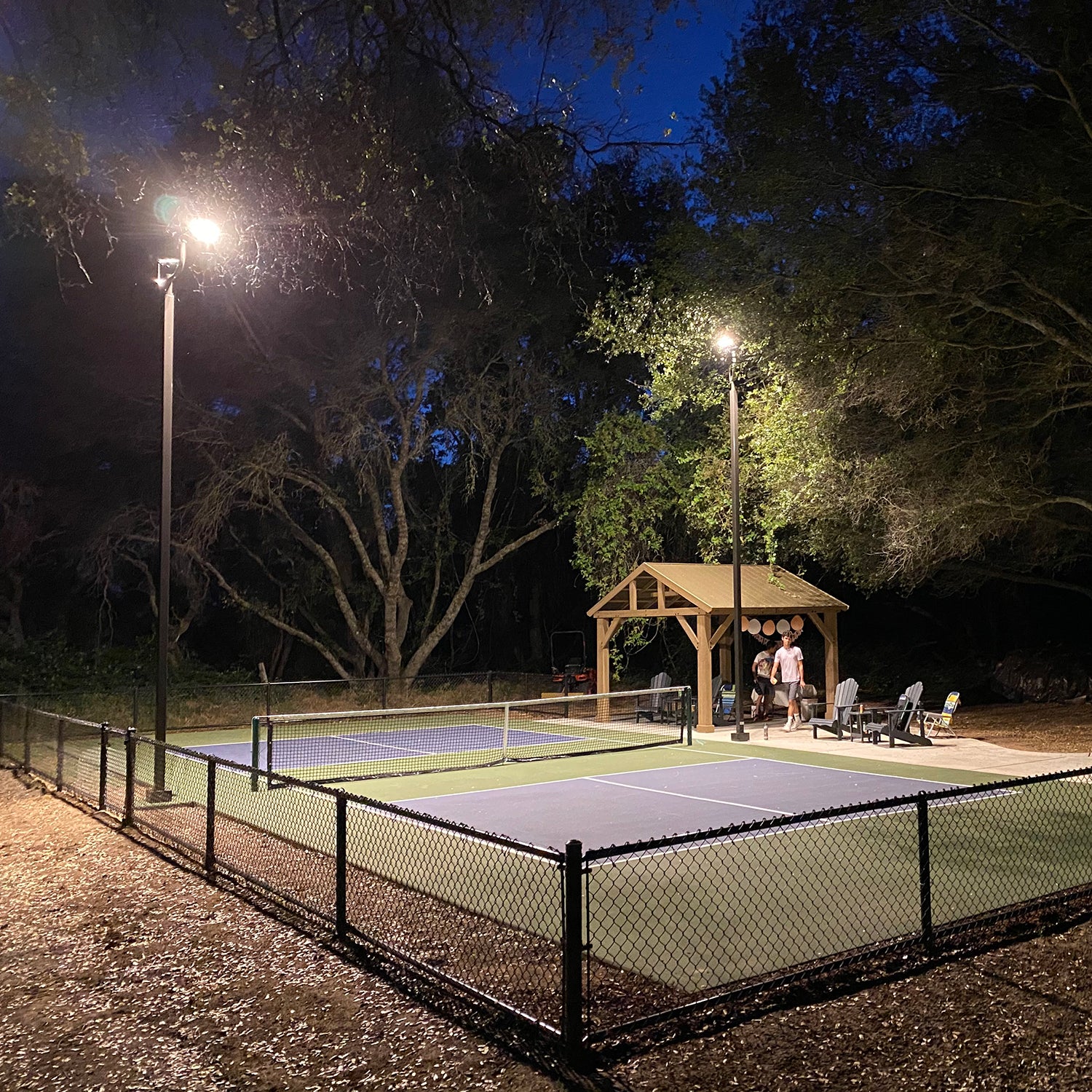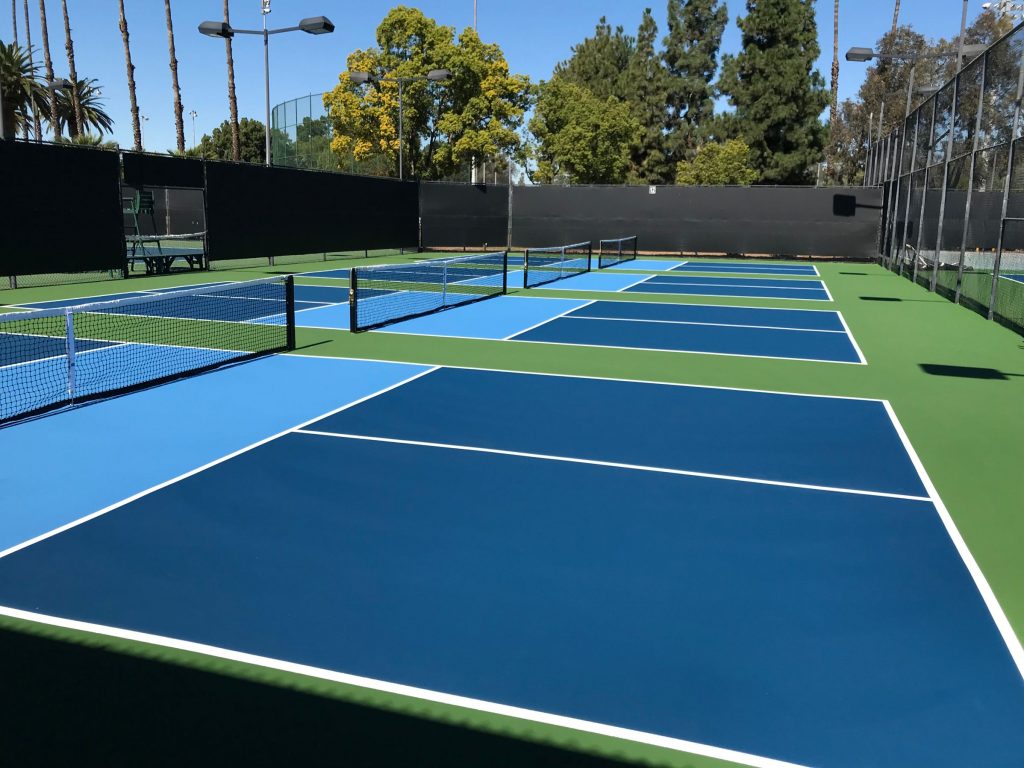Technologies in Pickleball Court Construction: Trends You Ought To Know
Technologies in Pickleball Court Construction: Trends You Ought To Know
Blog Article
From Design to End Up: Your Overview to Building a Pickleball Court
Creating a pickleball court is a complex task that requires a strategic technique, starting with the selection of an optimum place that stabilizes accessibility and engagement. The style stage is pivotal, as it includes sticking to official court measurements while thinking about outside elements such as sunlight and sound. Material choice likewise plays a significant role in guaranteeing the court's longevity and performance. As we check out the vital action in this process, you'll uncover what it takes to change a principle into a fully useful facility that satisfies the demands of its players.
Picking the Right Location
When intending to construct a pickleball court, it is vital to continually take into consideration the area, as it plays a vital duty in the total functionality and enjoyment of the facility. Choosing a site that is conveniently obtainable improves involvement, ensuring that gamers can easily get to the court without substantial traveling barriers (Pickleball court construction). In addition, proximity to houses, parks, or area facilities can promote a sense of community involvement and increase usage
The terrain is an additional essential element; a level, well-drained area minimizes maintenance concerns and gives a risk-free playing surface area. Staying clear of locations vulnerable to flooding or extreme wind will certainly also boost the having fun experience. Additionally, consider the sunlight's path throughout the day; placing the court to decrease glare can significantly improve presence for gamers.
Sound degrees should be assessed, as finding the court near high-traffic roadways or loud atmospheres might interfere with the playing experience. Finally, zoning laws and licenses need to be examined to make sure conformity with regional regulations. By very carefully evaluating these aspects, one can safeguard a place that not only meets practical needs however additionally boosts the general pleasure of pickleball.

Designing Your Court Layout
After choosing a proper location for your pickleball court, the following action includes designing an efficient court layout that makes the most of performance and gamer experience. Begin by sticking to the main measurements stated by the U.S.A. Pickleball Organization, which dictate a court dimension of 20 feet large by 44 feet long for both songs and increases play.

Following, position the court to reduce sunlight glare, ideally straightening it north-south, which aids maintain visibility throughout games. Pay interest to accessibility, guaranteeing paths for gamers, viewers, and upkeep equipment.
If your design includes multiple courts, space them effectively to lower sound and disturbance throughout play, while also allowing for spectator areas. Incorporate designated locations for seats, storage space, and services such as hydration terminals. Thoughtful preparation of these components will certainly develop an inviting and practical environment for players of all skill levels.
Choose Products and Surfaces
Just how can the ideal option of surface areas and products improve the gameplay experience on your pickleball court? Choosing suitable materials and surface areas is critical for optimum performance, safety, and longevity of your court. One of the most frequently utilized surfaces consist of asphalt, concrete, and specialized sporting activities ceramic tiles, each offering distinct benefits.
Asphalt supplies an economical choice, offering a smooth surface area that enables for good round bounce and traction. Concrete, while more pricey, provides resilience and minimal upkeep, making it suitable for high-traffic locations. For those seeking advanced efficiency, specialized sports floor tiles are available in numerous colors and appearances, created specifically for pickleball. These floor tiles provide excellent hold you could look here and padding, minimizing the risk of injury.
In addition, think about the influence of surface color and structure on presence and gameplay. Brightly colored surface areas enhance sphere presence, while distinctive surfaces can assist regulate the rate of the ball, accommodating varied having fun styles. Eventually, the selection of surfaces and materials need to straighten with your budget, preferred appearances, and the level of play you want to fit, making certain a quality experience for all players.
Building Actions to Adhere To
Starting the construction of a pickleball court requires cautious planning and implementation to make sure a high-quality playing surface. Begin by marking the dimensions of the court, which measures 20 feet by 44 feet for doubles play. Excavate the area to a depth of approximately 4 to 6 inches, guaranteeing appropriate drain and a level foundation.
Next, install a stable base using smashed rock or crushed rock, condensing it extensively to produce a strong foundation. Once the base is set, apply a concrete slab, ensuring it goes to least 4 inches thick. Smooth the surface for ideal playability, enabling it to treat for the suggested time, normally around 28 days.

Final Touches and Upkeep
Completing the building of a pickleball court entails vital final touches and continuous upkeep to ensure longevity and ideal performance. Guarantee that the surface area is properly cured and cost-free of particles. A complete cleaning eliminates dust, dust, or any kind of products that might affect gameplay. Additionally, use a high-grade court finish to enhance grip and secure versus wear.
Following, inspect the net and blog posts for proper positioning and tension. A well-kept internet is essential for reasonable play, so changes may be required after preliminary use. Mount border lines using sturdy, weather-resistant paint to keep visibility in time.
Normal maintenance is crucial to protecting your court (Pickleball court construction). Schedule regular evaluations to look for surface fractures, fading lines, or drain concerns. Motivate repairs will prevent minor concerns from rising into major problems
Verdict
In summary, the effective construction of a pickleball court entails an organized approach, starting with the choice of an appropriate area and careful design of the court design. The choice of products significantly influences the court's longevity and efficiency, while adherence to well established building and construction actions ensures high quality implementation. Constant upkeep and the application of high-quality finishings are necessary for preserving the court's problem, thereby providing an optimal having fun experience for all sites participants.
Just how can the right selection of surface areas and products enhance the gameplay experience on your pickleball court?Getting started on the building of a pickleball court calls for mindful preparation and execution to guarantee a top quality playing surface area.After treating, repaint the court lines using high-quality, outdoor-grade paint, sticking to the main dimensions for pickleball courts.Completing the building and construction of a pickleball court involves vital final touches and ongoing maintenance to make certain longevity and optimum performance.In summary, the successful building of a pickleball court entails a methodical method, beginning with the selection of an appropriate place and here cautious design of the court format.
Report this page